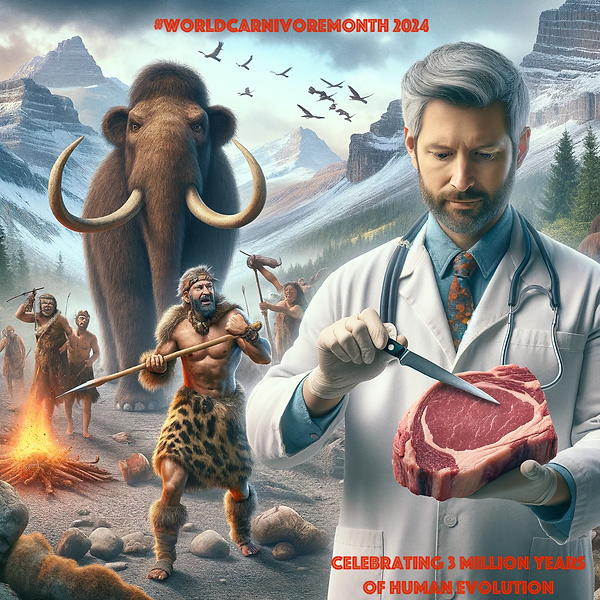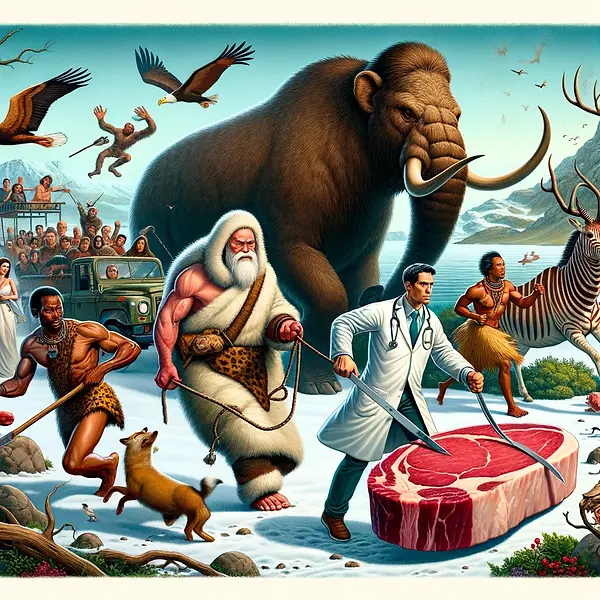


Title:
Early weaning age highlights emergence of carnivory in human evolution
Abstract:
Impact of Carnivory on Human Development and Evolution Revealed by a New Unifying Model of Weaning in Mammals
Details
Humans have an early weaning age (less than three years old) relative to other species, which is strongly associated with carnivory level. Some authors “highlight the emergence of carnivory as a process fundamentally determining human evolution” [44].
Abstract
Our large brain, long life span and high fertility are key elements of human evolutionary success and are often thought to have evolved in interplay with tool use, carnivory and hunting. However, the specific impact of carnivory on human evolution, life history and development remains controversial. Here we show in quantitative terms that dietary profile is a key factor influencing time to weaning across a wide taxonomic range of mammals, including humans. In a model encompassing a total of 67 species and genera from 12 mammalian orders, adult brain mass and two dichotomous variables reflecting species differences regarding limb biomechanics and dietary profile, accounted for 75.5%, 10.3% and 3.4% of variance in time to weaning, respectively, together capturing 89.2% of total variance. Crucially, carnivory predicted the time point of early weaning in humans with remarkable precision, yielding a prediction error of less than 5% with a sample of forty-six human natural fertility societies as reference. Hence, carnivory appears to provide both a necessary and sufficient explanation as to why humans wean so much earlier than the great apes. While early weaning is regarded as essentially differentiating the genus Homo from the great apes, its timing seems to be determined by the same limited set of factors in humans as in mammals in general, despite some 90 million years of evolution. Our analysis emphasizes the high degree of similarity of relative time scales in mammalian development and life history across 67 genera from 12 mammalian orders and shows that the impact of carnivory on time to weaning in humans is quantifiable, and critical. Since early weaning yields shorter interbirth intervals and higher rates of reproduction, with profound effects on population dynamics, our findings highlight the emergence of carnivory as a process fundamentally determining human evolution.
Abstract
Although humans have a longer period of infant dependency than other hominoids, human infants, in natural fertility societies, are weaned far earlier than any of the great apes: chimps and orangutans wean, on average, at about 5 and 7.7 years, respectively, while humans wean, on average, at about 2.5 years. Assuming that living great apes demonstrate the ancestral weaning pattern, modern humans display a derived pattern that requires explanation, particularly since earlier weaning may result in significant hazards for a child. Clearly, if selection had favored the survival of the child, humans would wean later like other hominoids; selection, then, favored some trait other than the child’s survival. It is argued here that our unique pattern of prolonged, early brain growth—the neurological basis for human intellectual ability—cannot be sustained much beyond one year by a human mother’s milk alone, and thus early weaning, when accompanied by supplementation with more nutritious adult foods, is vital to the ontogeny of our larger brain, despite the associated dangers. Therefore, the child’s intellectual development, rather than its survival, is the primary focus of selection. Consumption of more nutritious foods—derived from animal protein—increased by ca. 2.6 myr ago when a group of early hominins displayed two important behavioral shifts relative to ancestral forms: the recognition that a carcass represented a new and valuable food source—potentially larger than the usual hunted prey—and the use of stone tools to improve access to that food source. The shift in the hominin “prey image” to the carcass and the use of tools for butchery increased the amount of protein and calories available, irrespective of the local landscape. However, this shift brought hominins into competition with carnivores, increasing mortality among young adults and necessitating a number of social responses, such as alloparenting. The increased acquisition of meat ca. 2.6 Ma had significant effects on the later course of human evolution and may have initiated the origin of the genus Homo.
Hypothesis:




